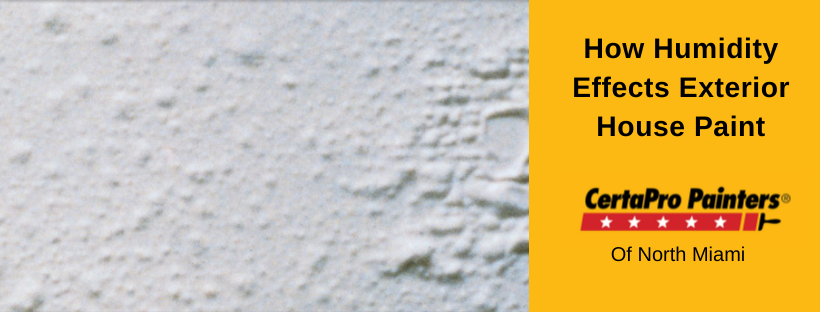
How Heat and Humidity Affects your Paint
Posted on July 5, 2021
When you are planning an exterior painting project you would ideally like to do the work during a time when you aren’t faced with temperature extremes, rain, or high humidity. There is a “goldilocks zone” for both temperature and humidity when painting outdoors. Working well outside of that zone is a recipe for trouble and even a costly repainting.
The temperature and humidity level are two of the things that can have a significant impact on the amount of time it takes paint to dry. Too little or too much of either can cause problems or even ruin your paint job. By avoiding extreme conditions, you can find just the right time to paint and get beautiful results. But how do temperature and humidity affect painting?
Temperature
Both temperatures that are too high or too low can negatively impact your painting. Temperatures that are too cold can keep paint from drying. If the temperature becomes freezing, your paint can freeze and cause crystallization. On the other hand, if it’s too hot outside, paint can form an exterior skin layer before the paint underneath has dried causing blisters, bumps, and other extreme problems.
The best temperature to paint with oil-based or latex paints is above 50°F and below 90°F for at least 48 hours. There are some paints that are created to be used in lower temperatures, even near freezing. It is risky to paint in near-freezing temperatures since the paint needs hours to dry without dipping below 32°F.
Humidity
Blistering, cracking, and peeling paint can be caused by high humidity in the air, which makes it impossible for the paint to dry. These damages cause the protective quality of the paint to be compromised and the damaged areas will need to be repaired.
If you’re painting wood siding, the wood can absorb the moisture in the air prior to painting. Without drying over the proper amount of time, it can become trapped in the wood and cause damage, rot, and mold. This will ultimately lead to the wood needing to be replaced due to deterioration. Paint will also have a hard time adhering to the wood if it’s wet.
How Temperature Affects Drying
As the temperature lowers, the paint thickens. The thicker the coating, the longer it takes for the paint to oxidize in the case of oil-based paints. In addition, when a coating is thicker, it extends the time it takes for the solvents to evaporate.
How Humidity Affects Drying
Humidity in the air will make the drying time for paint much longer. Acrylic and oil-based paints are subject to the moisture in the air whether it is from humidity or condensation. The introduction of water will damage or even outright ruin the finishes.
If you are unsure of painting and the weather in your area for exterior paint jobs, contact the pros at CertaPro Painters® of North Miami. They are used to planning and working around precipitation and humidity for outdoor projects. Get a free estimate on your paint job today.





